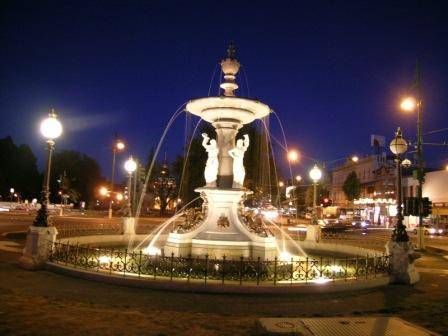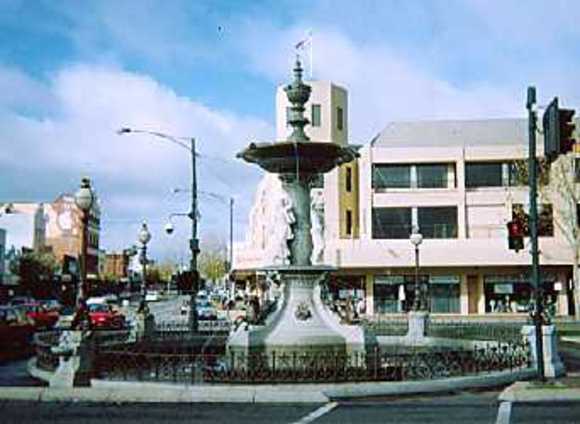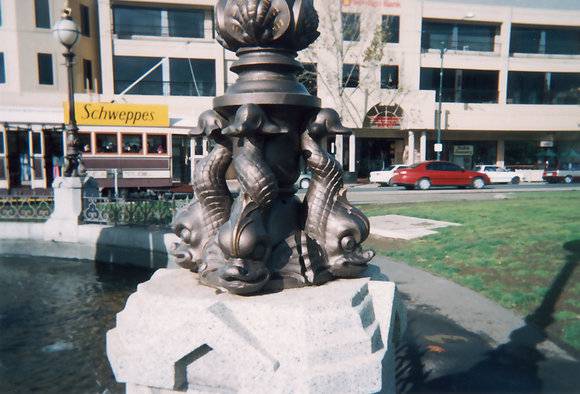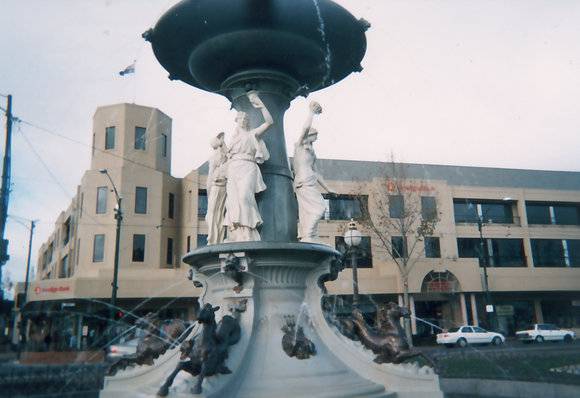| Back to search results » | Back to search page » |
|
Alexandra Fountain
LocationCharing Cross, BENDIGO VIC 3550 - Property No B1371
File NumberB1371LevelState |
|
Statement of Significance
The Alexandra Fountain, Bendigo, is a very large monument dominating the centre of the intersection of Pall Mall and View Street Bendigo, known as Charing Cross. It was designed by prolific local architect, William Vahland and constructed by local craftsmen. The fountain was built from the proceeds of the Bendigo Juvenile Industrial Exhibition of 1879, a 500 pound gift from George Lansell the 'Quartz King' of Victoria, and 700 pounds from the Sandhurst City Council. It was named after Alexandra, Princess of Wales, whose sons, Princes Albert and George, attended the opening ceremony on 5 July 1881. The fountain is a landmark in Bendigo and situated centrally on the most prominent intersection in the city. The fountain is constructed from 20 tonnes of highly polished Harcourt granite, cast iron and painted stone. It is 28ft high, and includes an urn in a top basin, with lion head spouts, on a pedestal flanked by four female allegorical figures in white. They stand on painted base featuring four ornate ribs surmounted by four bronzed spouting mer-horses with spouting dolphin figures above and the panels between feature bronzed sea-themed medallions composed of seashells, dolphins and tridents. The main fountain sits in a 2ft deep circular pool 50ft in diameter. The pool is surrounded by a low decorative cast-iron fence, and features four integral cast-iron lamps with bases featuring dolphins, set on granite plinths. The Alexandra Fountain is the largest and most ornate municipal fountain in Victoria after the 1880 Exhibition Fountain by Joseph Hochgurtel in the Carlton Gardens. The fountain has historical importance as a manifestation of the enormous financial success of the central goldfields and of the consequent prosperity of Bendigo, one of the largest gold mining centres in the state in the 19th century. The Alexandra Fountain has aesthetic significance as a grand monumental composition featuring large-scale elements, ensuring prominence from some distance, embellished by smaller scale elements such as statuary and a wealth of finely executed detailed sculptural elements, that reward closer viewing. Its design and detailing is typical of late Victorian monumental design influenced by classical models, but is a rare example of these models applied to a fountain. Amended from Heritage Victoria Statement of Significance 30/07/2010 Classisfed: Notable object: 08/02/1962 Revised: classified: State: 03/08/1998
Group
Public Art
Category
Fountain








